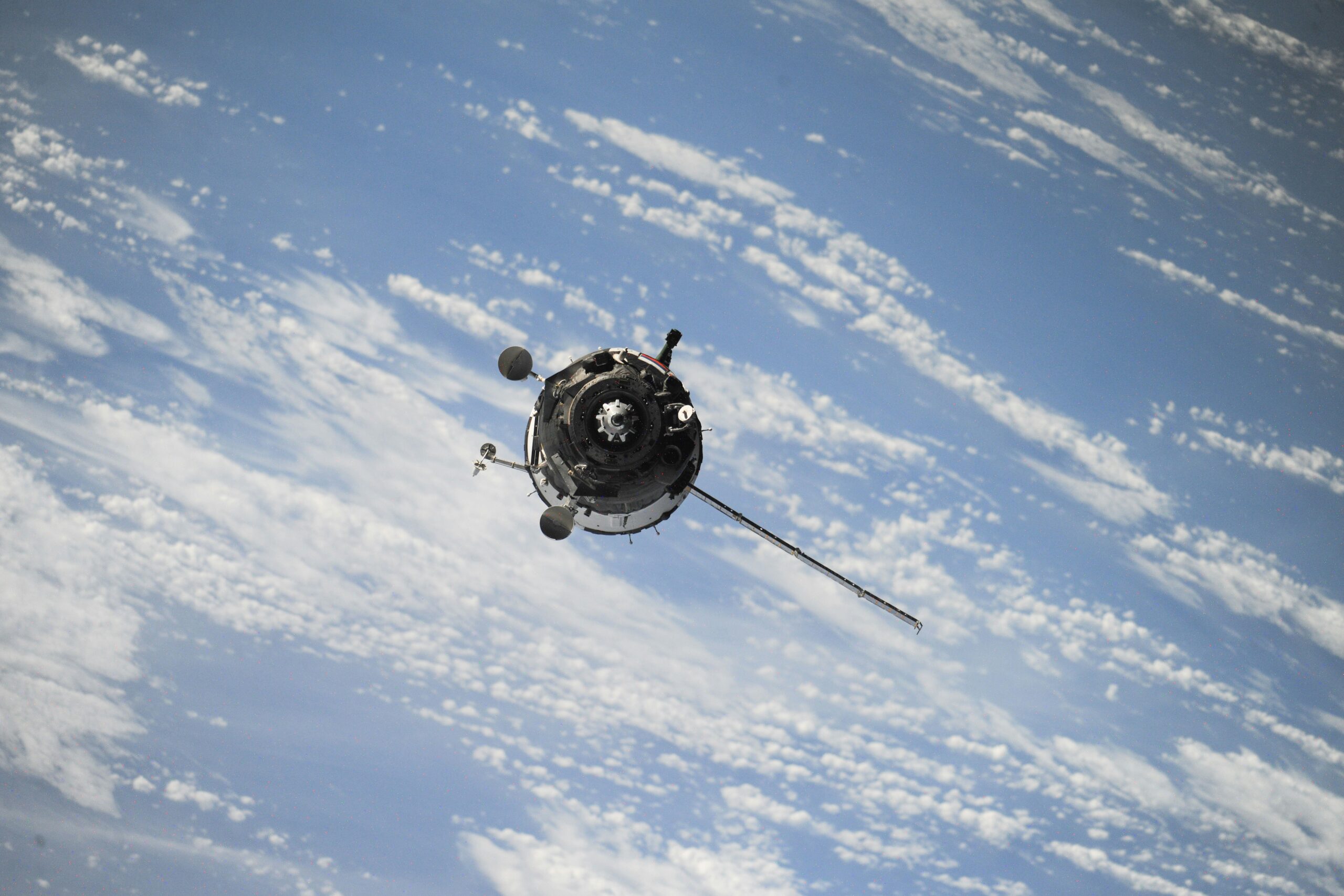France will pour €717 million into Eutelsat Group. The cash comes through the State Shareholdings Agency and lifts the state’s holding to 29.99 percent, just under the takeover threshold. Finance officials frame the move as a hard push for European digital and industrial autonomy.
The purchase slots into a bigger €1.35 billion capital increase that Eutelsat announced on 19 June. Other anchor investors will join the round. Bharti Space stays in for €240 million. CMA CGM commits nearly €105 million. The French insurance-backed FSP fund adds about €70 million.
After the placement closes, the core share register will look like this:
- French state: 29.99 %
- Bharti Space: 18.70 %
- CMA CGM: 7.81 %
- Fonds Stratégique de Participations: 5.22 %
- United Kingdom: about 8 % (down from 11 %)
- Free float and others: the balance
Defense officials confirm that Paris wants a decisive voice over constellation strategy while avoiding a full takeover bid.
The fresh equity plugs two urgent gaps. First, it trims leverage from four times EBITDA to roughly 2.5 by fiscal-year 2025-26. Second, it secures early funding for a 440-satellite renewal cycle that begins in 2026. Airbus already holds a contract for the first 100 spacecraft. French Government to Lead with a €1.56 billion capital boost, further strengthening Eutelsat’s position.
Eutelsat merged with OneWeb in 2023. The deal created the sole non-U.S. operator with both GEO and large-scale LEO fleets in service. The OneWeb network now fields more than 650 birds. Current coverage meets most mid-latitude needs, but global reach depends on new gateway sites coming online by late 2026.
Industry sources say Starlink still holds a raw capacity edge. SpaceX has more than 7,800 active satellites and a monthly launch cadence that Europe cannot match. Yet buyers who must operate inside EU security frameworks demand a home-grown option that offers sovereign key management and assured priority. France wants Eutelsat to fill that slot.
Paris sealed a 10-year Nexus framework contract with Eutelsat on 18 June. The deal, worth up to €1 billion, ties OneWeb capacity to the armed forces. It complements the Syracuse GEO system by adding low-latency links for mobile command posts, drones, and special forces teams. The package includes hardening measures on the new satellites and encrypted gateways for classified traffic, similar to the approach taken by the U.S. Space Force in its MILNET initiative.
Nexus also aligns with IRIS², the EU’s multi-orbit secure-connectivity program. IRIS² will pool public funds with private equity to build a third-generation constellation for government, critical-infrastructure, and commercial users. Eutelsat, SES, and Hispasat lead the industrial consortium. Our analysis shows that Eutelsat’s capital raise pushes private financing for IRIS² above the €2 billion mark, cutting the load on Brussels.
Eutelsat projects revenue of €1.5 – 1.7 billion by 2029. The growth model rests on several drivers:
- High-throughput OneWeb-2 satellites with native quantum-key distribution channels
- An end-to-end managed service for offshore energy, shipping, and aviation clients
- Bundled GEO–LEO backhaul for 5G rural infill across the EU and Africa
- Defense packages built around Nexus-grade security modules
Company officials say the blended orbit approach lowers churn because customers keep a single contract while moving between latency-sensitive and bandwidth-heavy tasks.
Market reaction has been swift. Eutelsat stock jumped more than 11 percent on 20 June, its best session in four years. Analysts attribute the bounce to reduced refinancing risk once the debt ratio falls. Some still call the valuation low versus global peers, but the consensus target price climbed above €6 for the first time since the OneWeb merger.
The governance map will also change. Agence des Participations de l’État will take over the 13.6 percent block now held by Bpifrance and add new shares from the placement. The shift puts Eutelsat under a direct custodial ministry instead of a bank subsidiary, shortening policy loops on security issues.
London will keep a golden-share style veto on OneWeb assets located in the United Kingdom, yet its voting power declines. Whitehall may subscribe in the follow-on rights issue, but officials say budget space remains tight after recent defense hikes. The drop to roughly eight percent limits the U.K.’s ability to block board motions.
Bharti’s decision to stay anchored in the deal offers two benefits. First, it secures early access to OneWeb-2 capacity for Indian telecom roll-outs. Second, it gives Eutelsat a launch partner in the event of Ariane 6 bottlenecks because Bharti can channel missions to ISRO’s LVM-3. According to industry sources, a side letter covers up to six contracted launches.
CMA CGM views its stake as a hedge against maritime bandwidth shortfalls on polar routes. The shipping line plans to equip 350 vessels with dual GEO-LEO terminals by 2028. That rollout will push demand for high-elevation passes, a factor that feeds into OneWeb-2 beam-steering design.
Inside France, the program will create or safeguard an estimated 2,800 jobs across Toulouse, Cannes, and Le Bourget. Thales Alenia Space leads payload integration, while Sodern supplies star-trackers. Officials put the domestic content share at 46 percent for the first production block.
Eutelsat earmarks €150 million for cybersecurity upgrades on ground stations. The plan includes quantum-safe key exchange, AI-based anomaly detection, and a hardened network-operation center near Rennes. These features will feed the Nexus service catalogue and meet the baseline for IRIS² accreditation.
A two-step financing calendar now drives the rest of 2025:
- July: extraordinary shareholder meeting to approve reserved placement
- September: rights issue opens to all shareholders
- October: funds settle; APE formally becomes top shareholder
- December: first Airbus-built OneWeb-2 satellite passes critical design review
Each milestone unlocks a tranche of export-credit guarantees that lower launch-contract costs by up to 120 basis points.
Technical managers caution that constellation refresh carries risk. The next batch must launch in 2026 before older units drift beyond fuel-safe mode. Eutelsat says it can slip one quarter before coverage gaps appear, but no more. SpaceX, Arianespace, and ISRO are shortlisted for lift capacity. Final selection depends on Ariane 6 flight-rate progress.
Starlink’s expansion remains the benchmark. SpaceX now offers optical cross-links on 80 percent of its fleet, a feature Eutelsat lacks today. OneWeb-2 will close that gap. A public tender for cross-link terminals closes on 30 June; Thales and Mynaric are lead contenders.
European planners see broader stakes. Secure mobile connectivity underpins border surveillance, energy pipelines, and disaster response. LEO adds resilience where fiber is scarce or damaged. Our analysis shows that every euro of sovereign satcom investment yields up to €3.20 in avoided outage costs across critical sectors.
The French move also nudges Brussels to tighten foreign-ownership rules covering sensitive orbital assets. Draft amendments to the EU Space Regulation, circulating this week, propose notification thresholds for stakes above 15 percent in dual-use operators. Lawyers expect a vote before year-end. In a similar move, Eutelsat Raises €1.35 Billion to solidify its strategic position.
Russia and China field new broadband constellations as well, yet both tie access to political alignment. European governments prefer a network under their own legal order. Defense insiders argue that commercial terms alone cannot guarantee service in conflict. A minority blocking share lets Paris enforce strategic directives without daily micromanagement.
Looking ahead, Eutelsat plans to test laser-routed airborne gateways in 2027, paving for direct UAV-to-LEO relays. The company will also pilot passive inter-satellite ranging that reduces GPS dependence. Results will feed into the third NexSat procurement wave under Nexus. IAI Wins $191M Spacecom Order, demonstrating the growing commercial demand for such satellite technologies.
IRIS² remains the bigger stage. The European Commission will release its Phase A kickoff contract in November. Eutelsat believes the GEO-LEO combo will secure a leadership role, especially after the fresh capital reduces debt costs. Consortium talks target an even split of work among France, Germany, and Spain to keep political backing solid.
In summary, France’s stake boost resets the European satcom map. It shores up Eutelsat’s balance sheet, accelerates constellation renewal, and locks in military access. The step does not close the capacity gap with Starlink overnight, but it gives Europe a credible path toward autonomous, secure connectivity.
REFERENCE SOURCES
- https://www.marketscreener.com/quote/stock/EUTELSAT-COMMUNICATIONS-5147/news/Eutelsat-Shares-Surge-as-French-Government-Set-to-Acquire-30-Stake-50293586/
- https://spacenews.com/french-government-to-lead-eutelsats-1-56-billion-capital-boost/
- https://www.bloomberg.com/news/articles/2025-06-19/eutelsat-raises-1-35-billion-led-by-france-to-aid-oneweb
- https://www.france24.com/en/france/20250619-france-becomes-biggest-shareholder-in-european-starlink-rival-eutelsat
- https://www.defensenews.com/global/europe/2025/06/20/eying-a-starlink-alternative-france-to-boost-eutelsat-stake/
- https://www.lemonde.fr/en/international/article/2025/06/21/the-french-government-is-stepping-in-to-rescue-eutelsat_6742558_4.html


